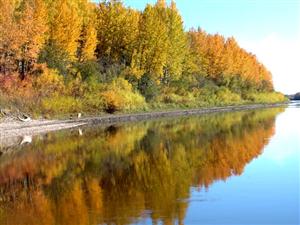Biodiversity in the Boreal Forest: Trees
The boreal forest is home to a wide variety of trees species. The most common coniferous species found in the boreal forest include black and white spruce, balsam fir, jackpine, and tamarack. The most common deciduous trees found in the boreal forest include white birch, trembling aspen and balsam poplar. All boreal tree species must be resilient and tolerant of cold temperatures, poor soil quality and fires (WWF 2008).
Coniferous trees are very well adapted to the climatic conditions. Their slender, conical shape minimizes snow accumulation on the branches, allowing the trees to generally withstand the weight of the snow for the entire winter without breaking (Radford University 2008). The narrowness and small surface area of the needles, together with a waxy coating, allows the tree to resist the drying effect of strong, cold winds. Keeping the needles throughout the winter allows the tree to photosynthesize on the occasional sunny, warm winter day, and to begin photosynthesizing in spring as soon as temperatures permit (Lakehead University 2007).
The deciduous trees of the boreal forest are also well adapted to the cold conditions. Aspen grow leaves in the summer to take advantage of photosynthesis and nutrient assimilation, and then shed them before the onset of winter. This prevents the tree from collecting heavy snow that could break the branches and from losing moisture through the leaves’ many pores (Kavanagh 2006).










